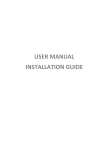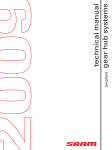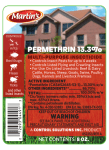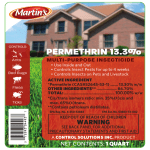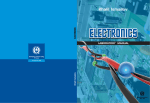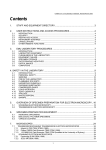Download Operating and Service Manual
Transcript
Operating and Service Manual Biomist, Inc. 573 North Wolf Road Wheeling, IL 60090 (847) 850-5530 www.biomistinc.com 1 Introduction Biomist Sanitizing Systems are the first practical method for sanitizing equipment and facilities with a solution of concentrated alcohol. They sanitize more completely and with far less effort and complexity than any conventional method. Most alcohol-based sanitizers use a diluted solution of alcohol applied with an aerosol or trigger sprayer. This is followed by rinsing or a manual wipe-down of the treated surfaces. Such follow-up procedures are both time consuming and inadequate as they often reintroduce germs. In contrast, the Biomist System propels an alcohol solution in a high pressure stream onto targeted surfaces, completely enveloping them in a sanitizing mist. The solution quickly air-dries with no need for rinsing or wipe-down procedures. A concentrated alcohol solution has long been recognized as an optimal sanitizing agent, but its flammability has presented a problem. To eliminate this problem, Biomist uses high pressure, bottled carbon dioxide (CO2) as a carrier to spray the sanitizer. CO2 is an inert, non-flammable gas (think of CO2 fire extinguishers) and when used as a carrier, displaces any oxygen that might lead to fire or explosion. In fact, Biomist Sanitizing Systems can be used in the presence of electrical spark or open flame without concern. Biomist Systems atomize the sanitizing solution into extremely tiny microparticles and propel them in a high pressure stream that swirls and penetrates all the cracks and crevices that would be impossible to reach with other sanitizing methods. The mist diffuses thoroughly throughout the area being treated, producing a uniform sanitizing effect. Biomist is the fastest sanitizing method available, by far. It is much more effective and far less expensive to use than all previous sanitizing methods. 2 Table of Contents Introduction…….………..………………...….….….Inside Front Cover Contents of the Operating Manual……………………………………… 3 Safety Precautions………………………………………………………4 General Information and Parts Description……………………………6 About Carbon Dioxide……………………………………………………8 System Specifications……………………………………………………9 Preparation and Operation………………………………………………10 - 11 Storing the System………………………………………………………12 Maintenance Procedures……………………………………………… 12 - 13 Service and Parts………………………………………………………… 13 Warranty………………………………………………………………… 14 Warranty Claims Procedure……………………………………………15 Material Safety Data Sheet……………………………………………… 16 - 18 3 Safety Precautions The Biomist Mini Sanitizing System was designed with safety in mind. Still, certain precautions should be taken before and during its use. * Never attempt to operate the Biomist System without first reading this operating manual. Ask for an explanation if there is anything you don't understand. * Never point the applicator gun at anything other than the surface to be sanitized, when pressing the applicator gun's trigger. * Always wear proper eye protection. * Never breath in the mist directly from the applicator gun. * Never operate the Biomist System in a confined space without adequate ventilation. * After use, always close the valve on the CO2 cylinder. Next, release gas pressure in the system by pressing the applicator gun's trigger until the pressure is exhausted. * Never attempt to repair or replace the unit's internal components without guidance from a Biomist trained technician. Make sure you follow the rules and procedures of your company's safety program. Pay close attention to the material safety data sheets and information on health and safety given to your company by the product suppliers. 4 Warning Before Biomist System start-up, read and follow all precautionary instructions and labels attached to the equipment, cylinders, containers and boxes Notice Since the conditions of use of the Biomist Sanitizing System are not within the control of Biomist, Inc., it is the user's obligation to determine the conditions for safe use of the system. Users are solely responsible for compliance with all Local, State and Federal regulations, ordinances and laws. 5 General Information and Parts Description Before you begin system operation, take a moment to acquaint yourself with the system's components: Machine Exterior 1 2 3 The SS-10 Sanitizing System consists of: 1. Applicator Gun - Siphons sanitizer from the solution bottle using the pressure of CO2 gas. Distributes micro-sized droplets of the sanitizing agent, which cling and adhere to targeted surfaces. Maintenance Required by Operator: None. 2. Sanitizer Soultion Bottle - Stores inside cabinet when not in use. Maintenance Required by Operator: Replace when bottle is empty. 3. Coiled Hose - Delivers pressurized CO2 to the applicator gun. Stores inside the cabinet when not in use. Maintenance Required by Operator: None. 6 Machine Interior 3 2 1 The SS-10 Unit's Interior: 1. The CO2 propellant system is powered by a pressurized cylinder of liquefied carbon dioxide. Maintenance Required by Operator: Replace the CO2 cylinder as required. See Replacing the CO2 Cylinder in the Maintenance Procedures section of this manual for instructions. 2. The high-pressure hose that delivers CO2 from the cylinder to system. Maintenance Required by Operator: None. 3. The gas control valving and regulator releases CO2 at the optimal spraying pressure. Maintenance Required by Operator: None. 7 About Carbon Dioxide (CO2) Carbon Dioxide is a colorless, tasteless, odorless gas found naturally in the atmosphere. Biomist Sanitizing Systems utilize CO2 as a pressurizing agent to power the application of its sanitizing chemicals. Food Grade CO2 is a non-toxic element which meets EPA, FDA and USDA guidelines. CO2 is non-flammable and its use as a propellant and carrier eliminates the flammable characteristics of the alcohol based sanitizer used by the Biomist system. Of equal importance is its non-corrosive and non-conductive nature which makes it safe for use on corrodible metals, electronics and other sensitive equipment. However, since CO2 is heavier than air (CO2 displaces oxygen) care must be taken when using it in enclosed spaces. Occupational Health and Safety Regulations have set maximum allowable CO2 exposure limits and where the potential exists for exposure above these limits, air monitoring devices and good ventilation are recommended. See the product's Material Safety Data Sheet for information about these safety standards. Storage CO2 cylinders should be stored in cool, dry, well ventilated locations. Avoid storage in basements or other rooms with poor ventilation. Do not store in direct sunlight, near radiators or furnaces and never where temperatures can exceed 125 degrees F (51.7 degrees C). Safety Always use industry brand CO2 as it is produced under exacting industry standards that afford maximum operating safety and service life for your facilities and equipment. 8 System Specifications Model: ………………………………………Biomist SS-10 Mini System Dimensions: .………………………………Height = 43 in. (109 cm) Depth = 11 in. (28 cm) Width = 15 in. (38 cm) Total Weight: ….….………………………… 65 lbs. / 29.5 kg Cabinet Material: ………………………… Type 304 Stainless Steel CO2 Cylinder Capacity: …………………… 10 lb. CO2 Cylinder Storage: ……………………Max. Temp. 125 degree F (51.7 C) Applicator Gun: ……………………………17 oz. Aluminum & Stainless Steel Fluid Tip: ……..…….………...……………Nylon Cap & Stainless Steel Orifice Coiled Hose: ………………………………25 ft. Extended/Rated 150 psig Safe Handling and Use Personal Protective Equipment Use of eye protection, such as safety glasses, is required. Use of protective gloves is a wise precaution but not required under normal use. Good ventilation to prevent accumulation of fumes is required. Use of protective clothing is recommended when dispensing large quantities of Biomist Formula D2. A water source to dilute spilled material should be available. Use Alcohol products are used safely every day in many applications. Alcohol based hand sanitizers are used daily in food handling and medical applications. Alcohol based surface disinfectants are used in consumer and medical applications daily. Biomist Formula D2 was designed to be applied manually to limited areas. Biomist Formula D2 is flammable and needs special handling to be used safely. Eye protection and good ventilation are required during use. Biomist Formula D2 should not be applied to hot surfaces or used near an open flame or other ignition source. When Biomist Formula D2, or any other sanitizer, is applied to any electrically powered equipment the power should be off and lock out/tag out devices applied. Avoid prolonged inhalation of any vapors and direct contact with eyes or skin. Good ventilation is required to keep alcohol levels in the air below both exposure and explosive limits. The substantial amounts of alcohol required to reach these limits will generally not be reached during normal usage of Biomist Formula D2. Care should be taken if Biomist Formula D2 is transferred from original packaging to do so away from ignition sources, in an area with good ventilation and a water supply to dilute Biomist Formula D2 in the case of a spill. 9 Preparation and Operating Instructions Setting Up the Biomist Mini Sanitizing System 1. Open the cabinet door. Remove the applicator gun and Biomist sanitizer solution bottle. 2. Remove the coiled hose from inside the cabinet. Attach one end of the hose to the quick-disconnect fitting located on the top of the system. Attach the other end of the hose to the applicator gun's quick-disconnect fitting. 3. To install the CO2 cylinder: a. Remove the cylinder from its shipping container, if necessary. b. Open the cabinet door. c. Place the cylinder next to the open cabinet. d. With the cylinder outside the cabinet, connect the high-pressure hose to the cylinder valve with the hand wheel located at the end of the hose. Tighten the hand wheel securely; do not overtighten. e. Place the connected cylinder and high-pressure hose into the cabinet. f. Secure the cylinder by wrapping the retaining strap around the cylinder and connect and close the strap. g. Slowly open the valve on top of the CO2 cylinder by turning the hand wheel counter-clockwise to full open position and then close 1/4 turn. This ensures that the hand wheel turns easily when the valve position is checked. h. Close the cabinet door. 10 Operating the Biomist Mini System 1. Use the applicator gun to apply the sanitizing solution evenly over the work area from a distance of 3 or more feet, depending on the surface requirements. The gun should be aimed at the surface being sanitized and move parallel with it. Apply the Biomist Formula D2 sanitizer using an overlapping pattern as shown in the illustration below. 2. Spray the sanitizer in sufficient volume for thorough coverage of the targeted work area. 3. Allow surfaces to air dry. Storing the Biomist Mini Sanitizing System 1. Open the cabinet door. 2. Turn the hand wheel on the top of the CO2 cylinder valve clockwise to full close. 3. Remove sanitizer solution bottle from applicator gun to avoid wasting solution. 4. Press applicator gun trigger until the CO2 pressure in the system is exhausted. 5. Re-attach sanitizer solution bottle to applicator gun. 6. Disconnect the coiled hose from the applicator gun and the system. 7. Store the applicator gun, sanitizer bottle and coiled hose inside the cabinet. 8. Close the cabinet door. The system can now be stored. 11 Maintenance Procedures To remove the CO2 cylinder: 1. Open the cabinet door to access the CO2 cylinder. Turn the hand wheel on top of the cylinder valve clockwise until the valve is completely closed. Remove the sanitizer solution bottle from the applicator gun to avoid wasting solution. Press the applicator gun's trigger until the CO2 pressure in the system is exhausted. 2. Remove the high-pressure hose from the cylinder valve by loosening the hand wheel on the end of the hose. 3. Open the retaining strap and remove the CO2 cylinder from the cabinet. To install the CO2 cylinder: 1. Remove the cylinder from its shipping container, if necessary. 2. Open the cabinet door. 3. Place the cylinder next to the open cabinet. 4. With the cylinder outside the cabinet, connect the high-pressure hose to the cylinder valve with the hand wheel located at the end of the hose. Tighten the hand wheel securely; do not overtighten. 5. Place the connected cylinder and high-pressure hose into the cabinet. 6. Secure the cylinder by wrapping the retaining strap around the cylinder and connect and close the strap. 7. Slowly open the valve on top of the CO2 cylinder by turning the hand wheel counter-clockwise to full open position and then close 1/4 turn. This ensures that the hand wheel turns easily when the valve position is checked. 8. Close the cabinet door. Caution Only use Biomist CO2 Cylinders supplied by Biomist. Use of cylinders other than those specified will void the manufacturer's warranty and can result in system failure and serious physical injury. 12 Replacing the Sanitizer Bottle Warning: Alcohol is highly flammable in its liquid state. Before changing sanitizer bottles, certain precautions should be observed. Remove all ignition sources. Do not smoke. Only change sanitizer bottles in well ventilated areas. 1. Unscrew the empty bottle from the base of the applicator gun. Remove the gun assembly from the bottle and set aside. 2. Remove the cap from the replacement bottle and place it on the empty bottle before discarding. 3. Remove the tamper-evident film from the replacement bottle. Place the bottle in position and secure it to the applicator gun by twisting the bottle counter-clockwise. 4. The applicator gun and new bottle of sanitizer are now ready for use. Cleaning the Biomist Mini System's Exterior 1. Use a non-abrasive stainless steel cleaner to remove water spots, streaks and finger marks. 2. Apply the cleaner with a soft cloth and wipe in the direction of the metal grain on the surface. 3. Follow all manufacturer's instructions regarding the cleaning agent and buff to a soft luster with a second clean, dry cloth. Troubleshooting If the applicator gun assembly does not spray, 1. Check the CO2 cylinder's top valve to ensure it is fully open. 2. Next, check the gas pressure gauge on the top of the system. It should read 20-30 psig. If the gauge reads 0 psig, the cylinder is most likely empty. Replace the cylinder. 3. If the assembly does not spray with a full cylinder, check the applicator gun to be sure it is not plugged. Check the applicator gun's siphon tube for cracks. 4. Call for service. BIOMIST SERVICE CENTER : (847) 918-9347 27864 Irma Lee Circle, Unit 101 Lake Forest, IL 60045 USA Fax: (847) 918-9349 13 Warranty Product: Biomist SS-10 Mini Sanitizing System Warranty Period: One Year This warranty does not cover coiled hoses. Certain other components of this product may have extended warranty periods. Seller will pass on to the Purchaser all warranties of such components, providing it is possible to do so. This warranty is valid only if the System is maintained and used in accordance with Seller's instructions. Seller shall be released from all obligations under this warranty should a sanitizing or disinfecting solution or agent other than a Biomist supplied sanitizer be used with this product; or if a gas other than a quality brand CO2 be used with this product; or if a cylinder other than a Biomist supplied cylinder be used with this product; or if repairs or modifications are made by persons other than authorized service personnel; or if the warranty claim results from physical abuse or misuse of the product. No agent, employee or representative of the Seller has the authority to bind the Seller to any affirmation, representation or warranty concerning this product. It is expressly agreed that Purchaser's sole and exclusive remedy for breach of the above warranty, for any tortuous conduct of Seller, or for any other cause of action, shall be the repair and/or replacement at Seller's option of any equipment or parts thereof, which after examination by Seller is proven to be defective. Replacement equipment and/or parts will be provided at no cost to Purchaser, F.O.B. Seller's Service Center. Failure of Seller to successfully repair any non-conforming product shall not cause the remedy established hereby to fail of its essential purpose. Purchaser specifically understands and agrees that under no circumstances will Seller be liable to Purchaser for economic, special, incidental, or consequential damages or losses of any kind whatsoever, including, but not limited to, loss of anticipated profits and any other loss created byreason of nonoperation of the product. This exclusion is applicable to claims for breach of warranty, tortious conduct or any other cause of action against Seller. THIS WARRANTY IS IN LIEU OF ALL OTHER WARRANTIES, EXPRESSED, IMPLIED OR STATUTORY, AND IS STRICTLY LIMITED TO THE TERMS HEREOF. SELLER SPECIFICALLY DISCLAIMS ANY WARRANTY OF MERCHANTABILITY OR OF FITNESS FOR A PARTICULAR PURPOSE. 14 Warranty Claims Procedure All warranty claims must be previously authorized by Biomist, Inc. Telephonic assistance and instructions may be obtained by contacting Biomist's Service Center at: Telephone: (847) 918-9347 Facsimile: (847) 918-9349 Or by writing to: Biomist Service Center 27864 Irma Lee Circle, Unit 101 Lake Forest, IL 60045 USA Authorization must be obtained from Biomist's Service Center prior to shipping any equipment to Biomist facilities. The model and serial number of the unit must be provided in order to process the return. If approved, a Return Equipment Authorization (REA) number will be provided. The REA number must be indicated on the packing slip and packing of the product being returned. The Purchaser returning the product is responsible for all freight, proper packing and any damage resulting from shipment of the product to Biomist. NOTICE Since the use of this information and the conditions of use of the Biomist Sanitizing System are not within the control of Biomist, Inc., it is the user's obligation to determine the safe use of the system. Users are solely responsible for compliance with all Federal, State and Local regulations, ordinances and laws. 15 MATERIAL SAFETY DATA SHEET 1. PRODUCT IDENTIFICATION: BIOMIST FORMULA D2 Chemical Family: Isopropyl alcohol-glycerol-water blend Manufactured For: Biomist, Inc. 573 North Wolf Road Wheeling, IL 60090 USA Emergency Information for Biomist Formula D2 please contact CHEMTREC toll-free, 24-hour emergency telephone number (800) 424-9300 or Biomist at (847) 850-5530, 8-5 Central Standard Time. Other Information: EPA Registration Number 73232-1-81599 Precautions: Flammable. Keep away from high heat, sparks, flame and all other ignition sources. May be harmful or fatal if swallowed. Use with adequate ventilation. Avoid prolonged breathing of vapor. Avoid contact with eyes or mucous membranes where prolonged contact causes irritation. Date Revised: March 1, 2005 2. HAZARDOUS INGREDIENTS Chemical Names CAS Numbers Isopropyl Alcohol 67-63-0 Other non-hazardous ingredients TOTAL Percent* 55-65% 35-45% 100% ACGIH TLV 400 ppm Exposure Limits in Air (ppm) OSHA PEL Other 400 ppm *Not a required category 3. PHYSICAL PROPERTIES Vapor Density: Vapor Pressure: Specific Gravity: Melting Point: Boiling Point: Viscosity: 2.07 33 @ 20 degrees C 0.8857 NA 180 degrees F non-viscous Physical State: Color: Odor: Miscibility: Stability: Corrosion: Clear liquid Clear Alcohol odor 100% in water >5 years non-corrosive Does not stain skin, fabrics, plastics, metals, glass, formica. How To Detect This Substance: Mild alcoholic odor 4. FIRE AND EXPLOSION Flash Point: 21.49 degrees Celcius (tag closed cup) Auto-ignition temperature: >658 degrees F. Flammable limits in air, volume%: lower 2; upper 12. NFPA Rating: Health (1), Flammability (3), Physical Hazard/Instability (0) FIRE FIGHTING PROCEDURES: Use dry chemical, "alcohol foam", or carbon dioxide. Water may be ineffective, but water should be used to keep fire-exposed containers cool. If a leak or spill has not ignited, use water spray to disperse the vapors and to protect persons attempting to stop leak. Water may be used to flush and dilute spills to non-flammable mixtures. 5. HEALTH HAZARD INFORMATION SYMPTOMS OF OVEREXPOSURE for each potential route of exposure: INHALATION: Exposure to over 400 ppm may cause headache, drowsiness, lassitude, loss of appetite and inability to concentrate. May cause irritation of the throat. SWALLOWED: Can cause depression of central nervous system, nausea, vomiting and diarrhea. EYE CONTACT: Can cause eye irritation (stinging sensation) and tear production. Redness of conjunctiva may occur. 16 SKIN CONTACT: Causes no skin irritation if used as directed. Excessive exposure for a long period of time may cause defatting or drying of skin. Rate of absorption of active ingredients through skin or the effects thereof are unknown. INGESTION: Can cause depression of central nervous system, nausea, vomiting and diarrhea. HEALTH EFFECTS FROM EXPOSURE ACUTE/CHRONIC: No special acute or chronic effects or risks are expected from usage as directed on label. Brief contact with eyes, conjunctiva or other mucous membranes may cause temporary irritation. Ingestion will cause irritation of throat and esophagus and may cause mental or physical disabilities associated with alcohol intoxication. FIRST AID, EMERGENCY PROCEDURES EYE CONTACT: Immediately flush affected area with plenty of cool water for at least 15 minutes. GET MEDICAL ATTENTION IMMEDIATELY. INHALATION: Immediately remove victim to fresh air. If victim has stopped breathing, give artificial respiration, preferably mouthto-mouth. GET MEDICAL ATTENTION IMMEDIATELY. INGESTION: If victim is conscious and able to swallow, have victim drink water or milk to dilute. Never give victim anything by mouth if victim is unconscious or having convulsions. CALL PHYSICIAN OR POISON CONTROL CENTER IMMEDIATELY. Induce vomiting only if advised by physician or poison control center. SUSPECTED CANCER AGENT? No. This product's ingredients are not found in Federal OSHA, NTP or IARC lists. MEDICAL CONDITIONS AGGRAVATED BY EXPOSURE: None known when used as directed. REACTIVITY DATA STABILITY: Stable at room temperature for at least 5 years in a tightly closed container. CONDITIONS AND MATERIALS TO AVOID: Contact with acetyl chloride and a wide range of strong oxidizing agents which may react violently. HAZARDOUS DECOMPOSITION PRODUCTS: Carbon monoxide can form upon incomplete combustion HAZARDOUS POLYMERZATION: None likely. 7. SPILL, LEAK AND DISPOSAL PROCEDURES ENVIRONMENTAL PRECAUTIONS: Avoid uncontrolled releases of this material. Where spills are possible, a comprehensive spill response plan should be developed and implemented. SPILL OR LEAK PROCEDURES: In case of large spills, wear appropriate respiratory protection. Eliminate possible ignition sources. Contain spilled material. Transfer to secure containers. Where necessary, collect spilled product using absorbent media. Dilute spill with water and directly flow to any available sanitary drain. In the event of an uncontrolled release of this product, the user should determine if the release is reportable under applicable laws and regulations. WASTE DISPOSAL: All recovered product may be dispensed along with large volumes of water through normal sanitary sewage systems in gradual releases. Note: Dispose of all wastes in accordance with federal, state and local regulations. 17 8. SPECIAL HANDLING INFORMATION VENTILATION: Adequate ventilation should be available for all uses of this product. RESPIRATORY PROTECTION: Where exposure is likely to exceed acceptable criteria, use NIOSH/MSHA approved respiratory protection equipment. For normal use of product as a surface disinfectant, no respirators are deemed necessary. EYE PROTECTION: Contact of product with the eyes is not expected or anticipated in the normal use: however, if there is a possibility of splashing or other means of contact with eyes, chemical safety goggles meeting the specifications of ANSI Standard Z87.1 should be worn. GLOVES OR OTHER PROTECTIVE CLOTHING: No protective gloves or clothing are deemed necessary for normal application of product. STORAGE: Store product in a cool place away from areas of high heat, flames or potential sparks. Empty containers may be discarded in trash after rinsing with water. SHIPPING DESCRIPTION: ISOPROPYL ALCOHOL, 3, UN1219, PGII. For bottles one liter or less ORM-D Biomist, Inc. 573 North Wolf Road Wheeling, IL 60090 USA Phone: (847) 850-5530 Fax: (847) 850-5535 E-mail: [email protected] 18



















